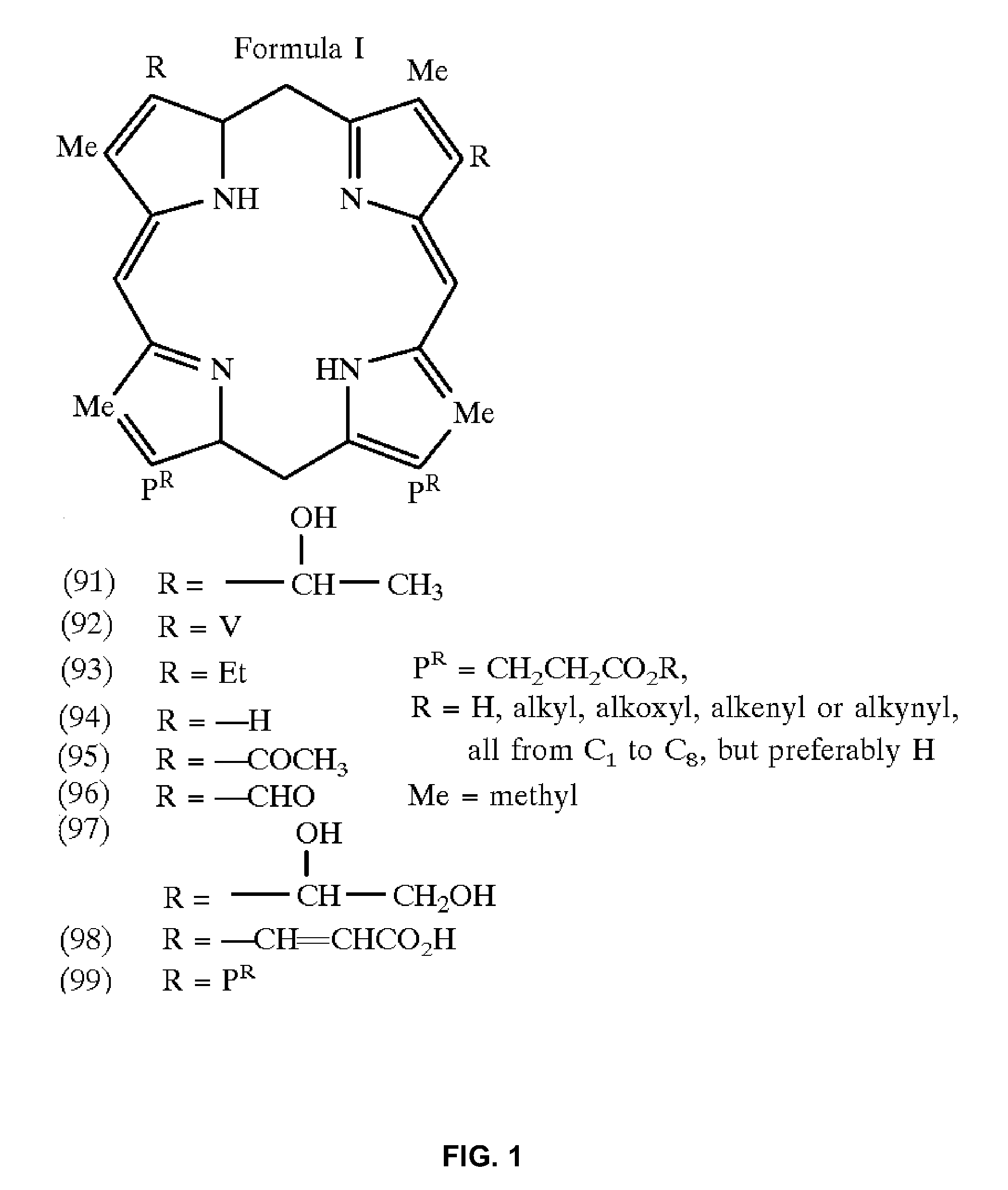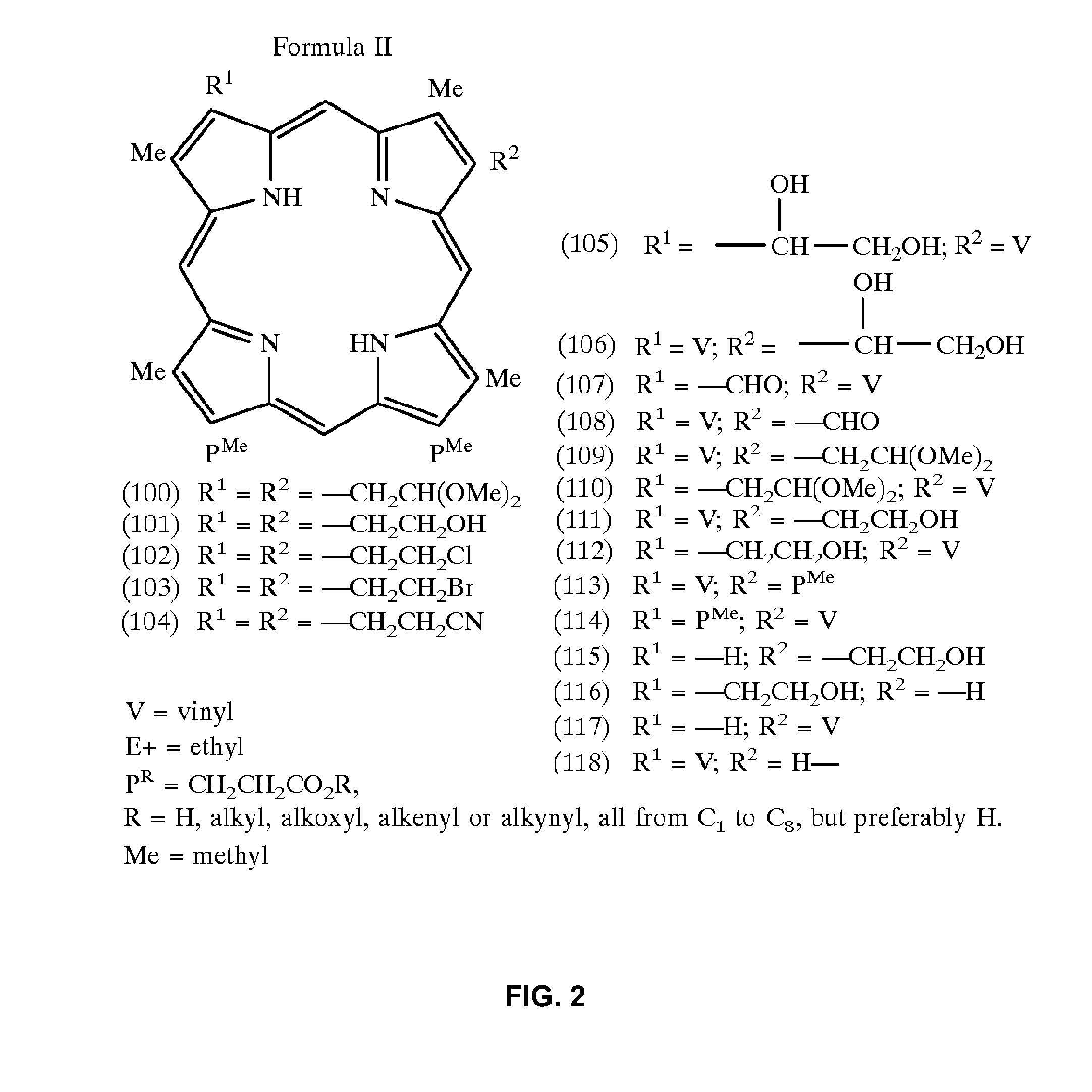Targeted antimicrobial moieties
a technology of chimeric moieties and antimicrobial peptides, which is applied in the direction of antibacterial agents, peptide/protein ingredients, antibacterial medical ingredients, etc., can solve the problems of drug resistance to antibiotics, prolong the need for hospital care, and the burden on health care systems, so as to reduce the risk of developing the condition, slow the onset or rate of development of the condition, and prevent or delay the development of the symptoms
- Summary
- Abstract
- Description
- Claims
- Application Information
AI Technical Summary
Problems solved by technology
Method used
Image
Examples
example 1
Design and Activity of a “Dual-Targeted” Antimicrobial Peptide
[0279]Numerous reports have indicated the important role of human normal flora in the prevention of microbial pathogenesis and disease. Evidence suggests that infections at mucosal surfaces result from the outgrowth of subpopulations or clusters within a microbial community, and are not linked to one pathogenic organism alone. In order to preserve the protective normal flora while treating the majority of infective bacteria in the community, a tunable therapeutic is necessary that can discriminate between benign bystanders and multiple pathogenic organisms. Here we describe the proof-of-principle for such a multi-targeted antimicrobial: a multiple-headed specifically-targeted antimicrobial peptide (MH-STAMP). The completed MH-STAMP, M8(KH)-20, displays specific activity against targeted organisms in vitro (Pseudomonas aeruginosa and Streptococcus mutans) and can remove both species from a mixed planktonic culture with lit...
example 2
Synthesis of Peptide-Porphyrin Conjugate
[0344]The mixture of coupling reagent HATU (5 eq. excess, 10 mg) and purpurin-18 (MW 564, 5 eq excess, 15 mg) in 600 mL dry dichloromethane (DCM):DMF:dimethylsulphoxide (DMSO) (1:1:1 (v / v)) was added to the peptide resin (1 molar equivalent, 15 mg) which was swelled by placing in minimal DMF for 30 min prior to reaction. 26 μL (10 molar equivalents) DIPEA was then added to the reaction flask to initiate the reaction. The reaction mixture was protected with argon and stirred at room temperature for 3 h.
[0345]After finishing, the reaction mixture was then passed down a sintered glass filtered vial and extensively washed with DMF and DCM to remove all waste reagents. The resin was then dried overnight in vacuum, and cleaved with 1 ml of trifluoroacetic acid (TFA) / thioanisole / water / EDT (10 / 0.5 / 0.5 / 025) for 2 hr at room temperature, and the cleavage solution was precipitated with 10 mL methyl-tert butyl ether. The precipitate was washed twice with ...
example 3
Synthesis of Peptide-CSA Conjugate
[0346]To the fully protected peptide (solution of B43-GGG (FIDSFIRSF-GGG, 0.025 mmol) and tri-Boc-CSA-15 (0.0125 mol) in 300 μL DMF, DCC (7.7 mg), HOBt (5.1 mg) and 13 μL DIEA were added in iced-bath. After stirred at room temperature for four days, the reaction mixture was poured into 5 ml water and extracted with chloroform (5×3 mL). The CHCl3 extract was evaporated under vacuum and dried in a lyophilizer overnight. The dried CHCl3 extracts was then dissolved in 1 mL DCM followed by added 1 mL of TFA in iced-bath. The reaction mixture was further stirred at room temperature for 2 hours and precipitated with methyl tert-butyl ether (10 mL). The precipitate was further washed once with the same amount ether and dried in vacuum.
PUM
| Property | Measurement | Unit |
|---|---|---|
| pharmaceutical composition | aaaaa | aaaaa |
Abstract
Description
Claims
Application Information
 Login to View More
Login to View More - R&D
- Intellectual Property
- Life Sciences
- Materials
- Tech Scout
- Unparalleled Data Quality
- Higher Quality Content
- 60% Fewer Hallucinations
Browse by: Latest US Patents, China's latest patents, Technical Efficacy Thesaurus, Application Domain, Technology Topic, Popular Technical Reports.
© 2025 PatSnap. All rights reserved.Legal|Privacy policy|Modern Slavery Act Transparency Statement|Sitemap|About US| Contact US: help@patsnap.com



